解题思路
「回文串」是指倒序后和自身完全相同的字符串,即具有关于中心轴对称的性质。观察发现,
- 当回文串长度为偶数时,则所有字符都出现了偶数次;
- 当回文串长度为奇数时,则位于中心的字符出现了奇数次,其余所有字符出现偶数次;
根据以上分析,字符串能被构造成回文串的充要条件为:除了一种字符出现奇数次外,其余所有字符出现偶数次。判别流程如下:
- 借助一个 HashMap ,统计字符串
s中各字符的出现次数; - 遍历 HashMap ,统计构造回文串的最大长度,
- 将当前字符的出现次数向下取偶数(即若为偶数则不变,若为奇数则减 1 ),出现偶数次则都可组成回文串,因此计入
res; - 若此字符出现次数为奇数,则可将此字符放到回文串中心,因此将
odd置 1 ;
- 将当前字符的出现次数向下取偶数(即若为偶数则不变,若为奇数则减 1 ),出现偶数次则都可组成回文串,因此计入
- 返回
res + odd即可。
<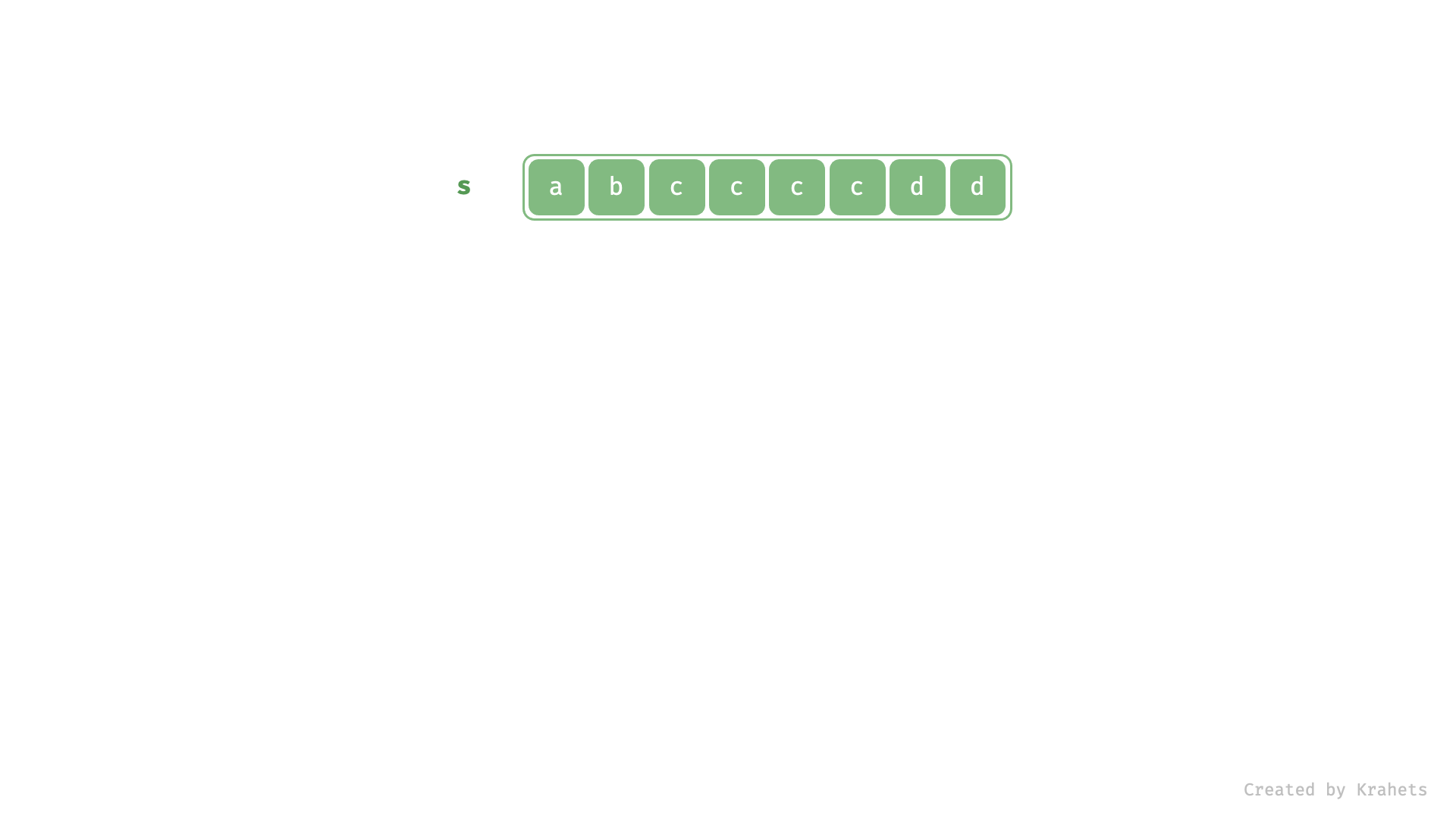 ,
,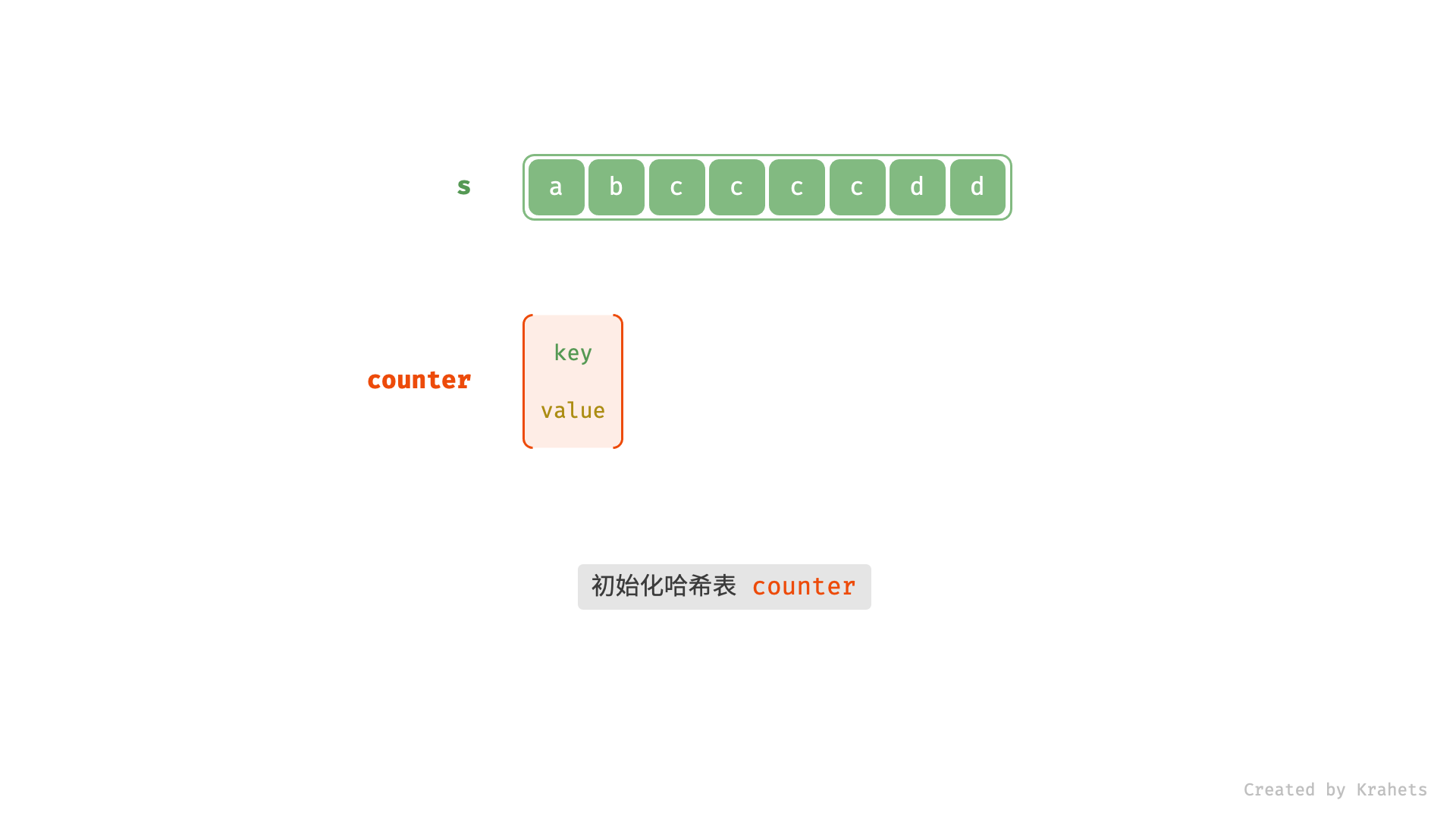 ,
,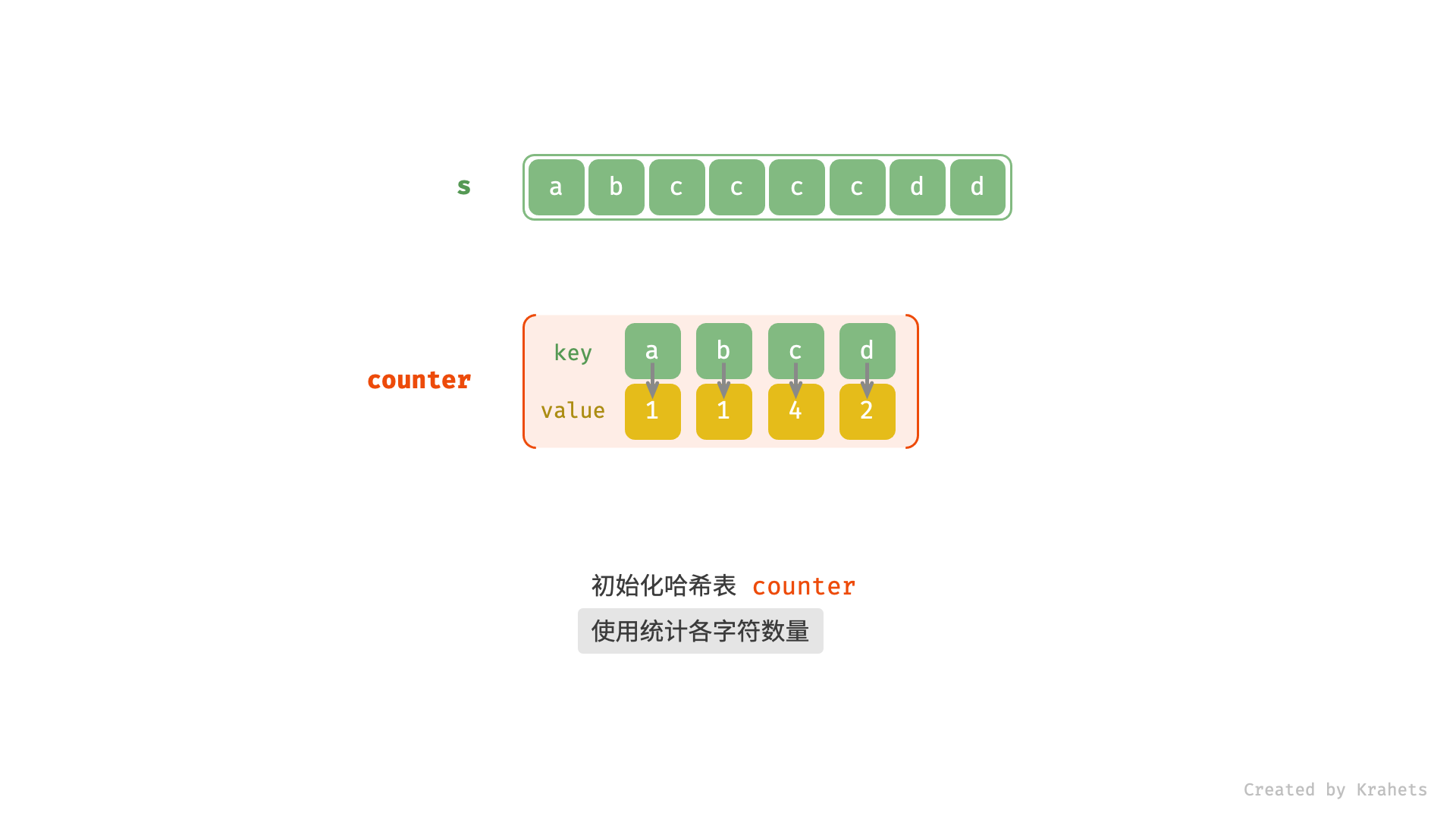 ,
,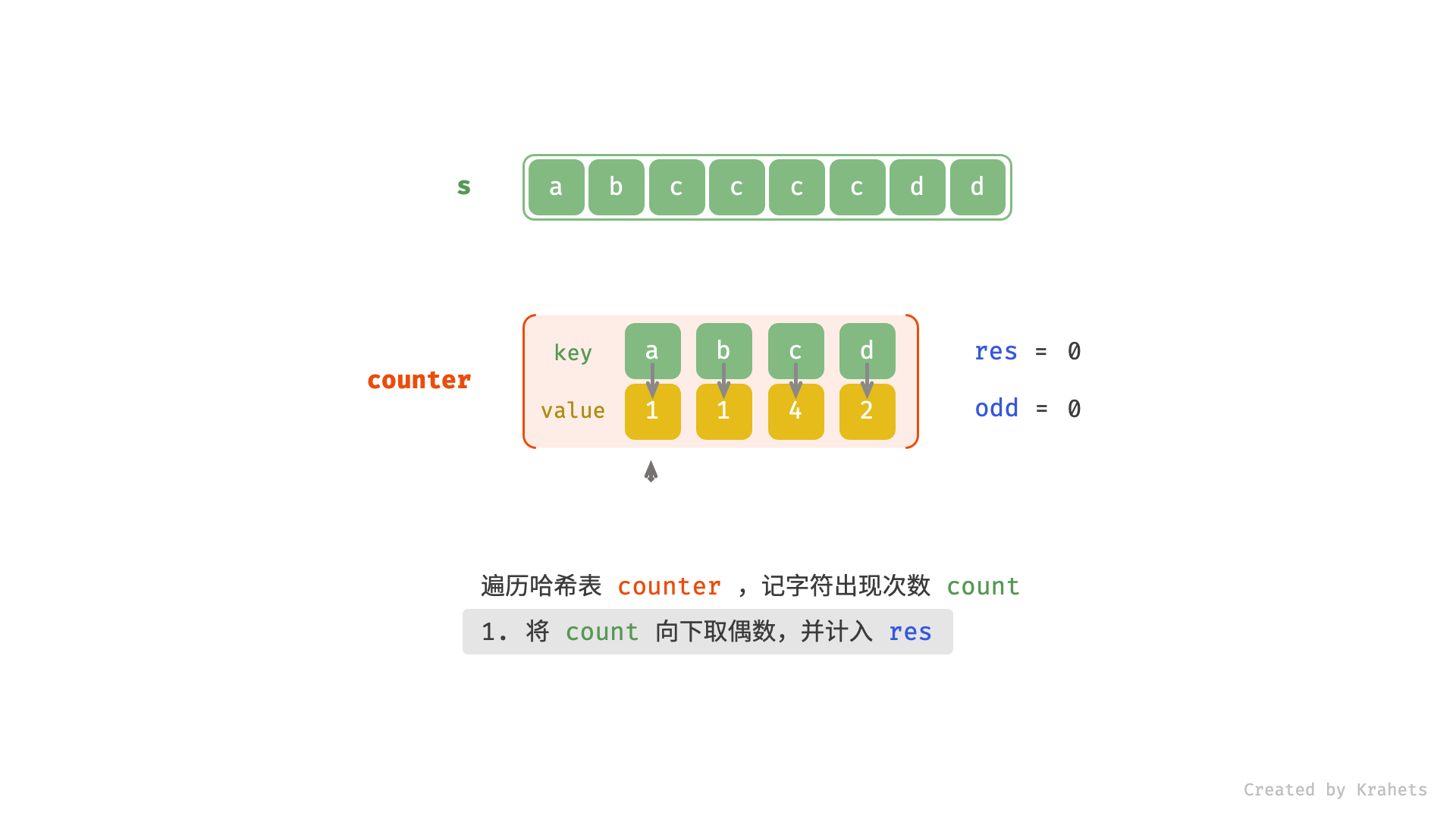 ,
,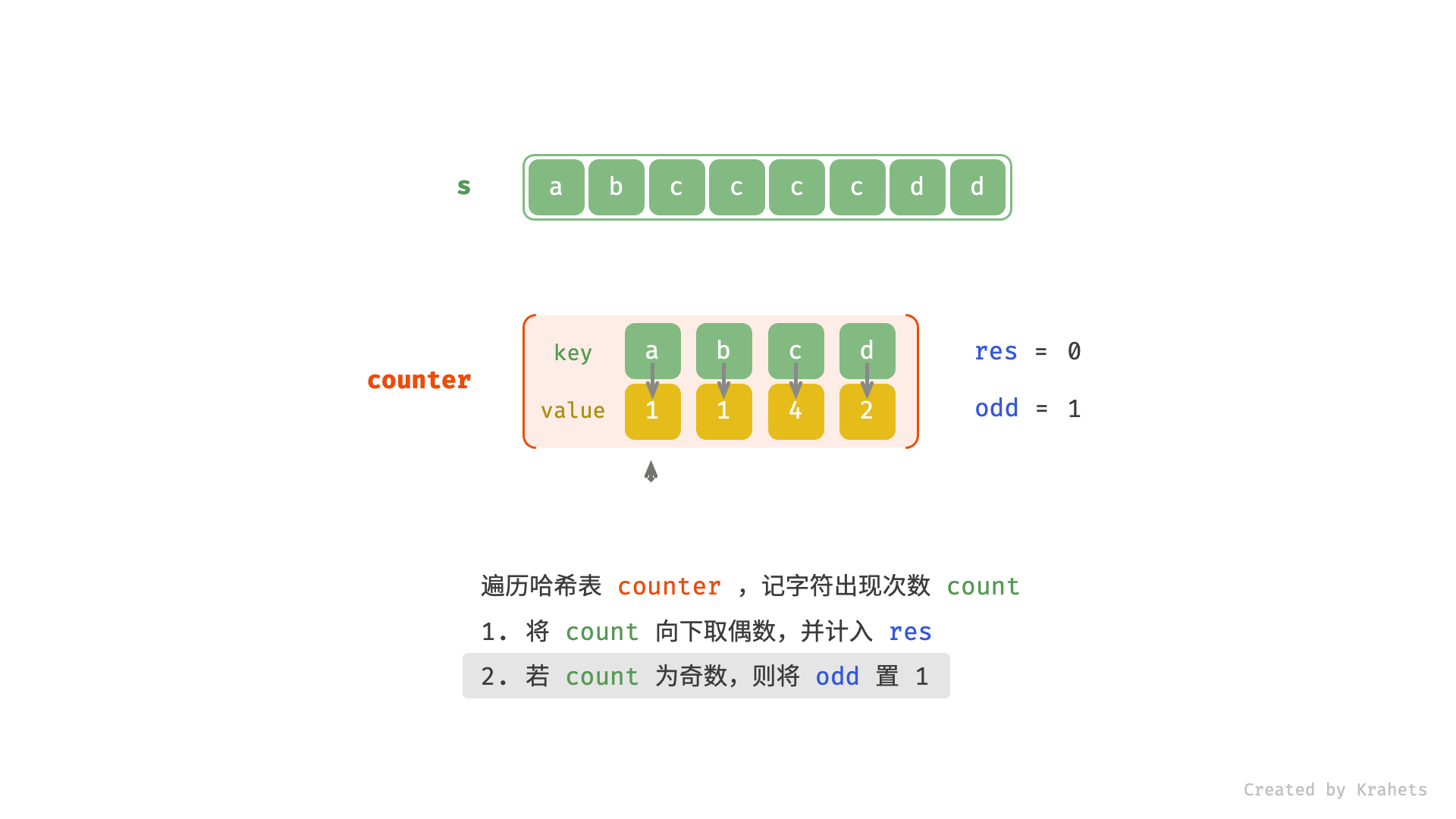 ,
,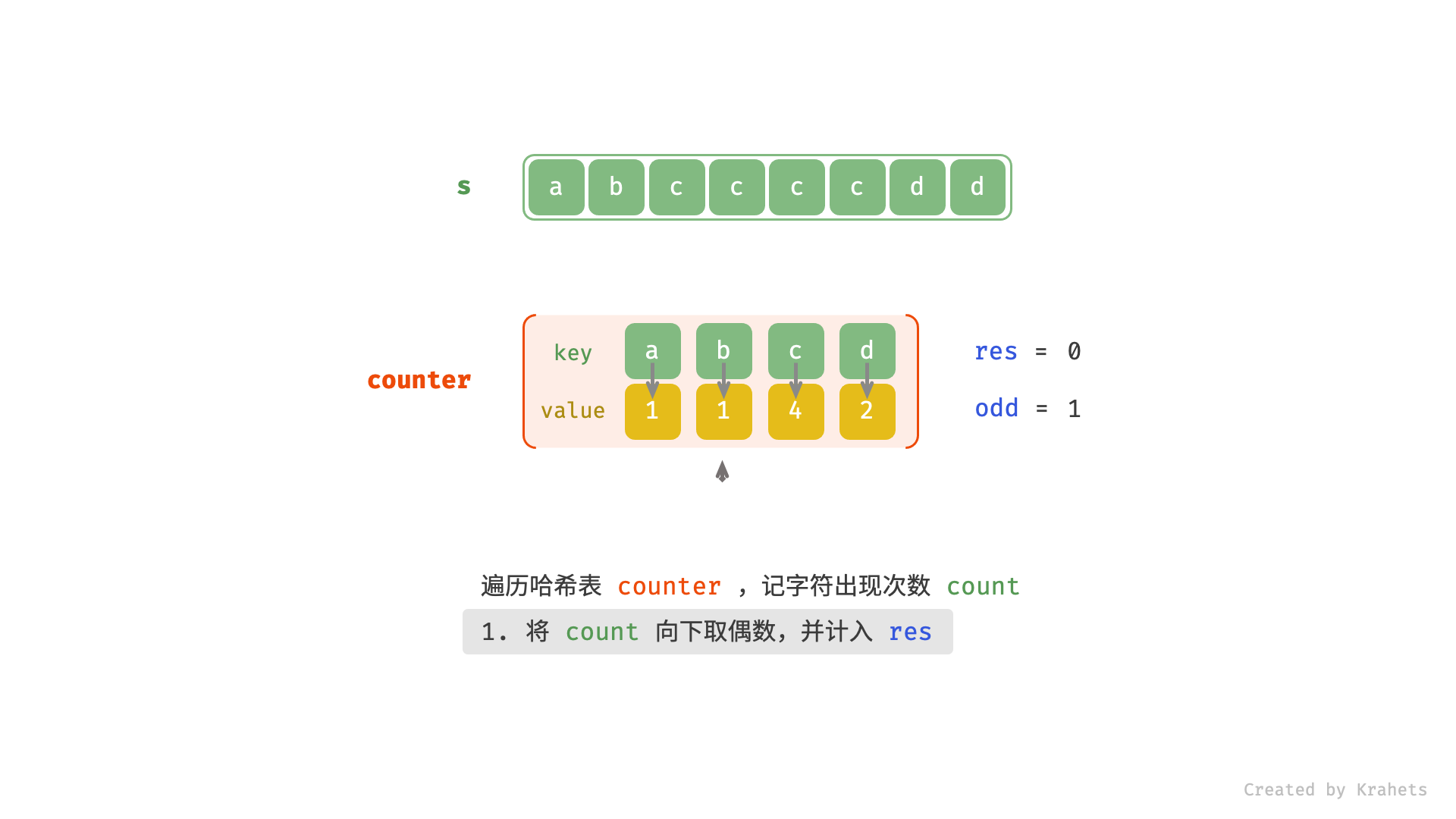 ,
,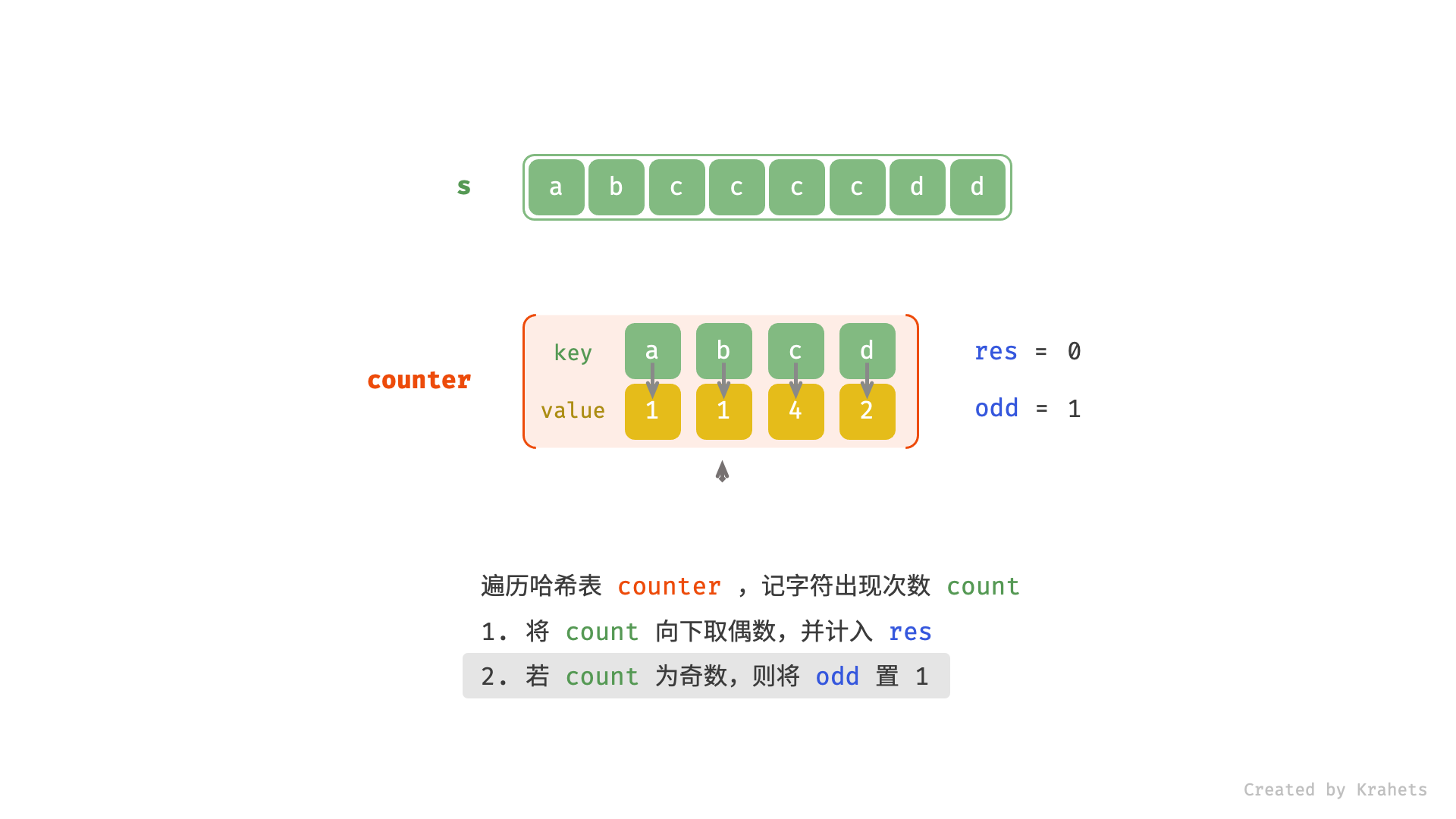 ,
,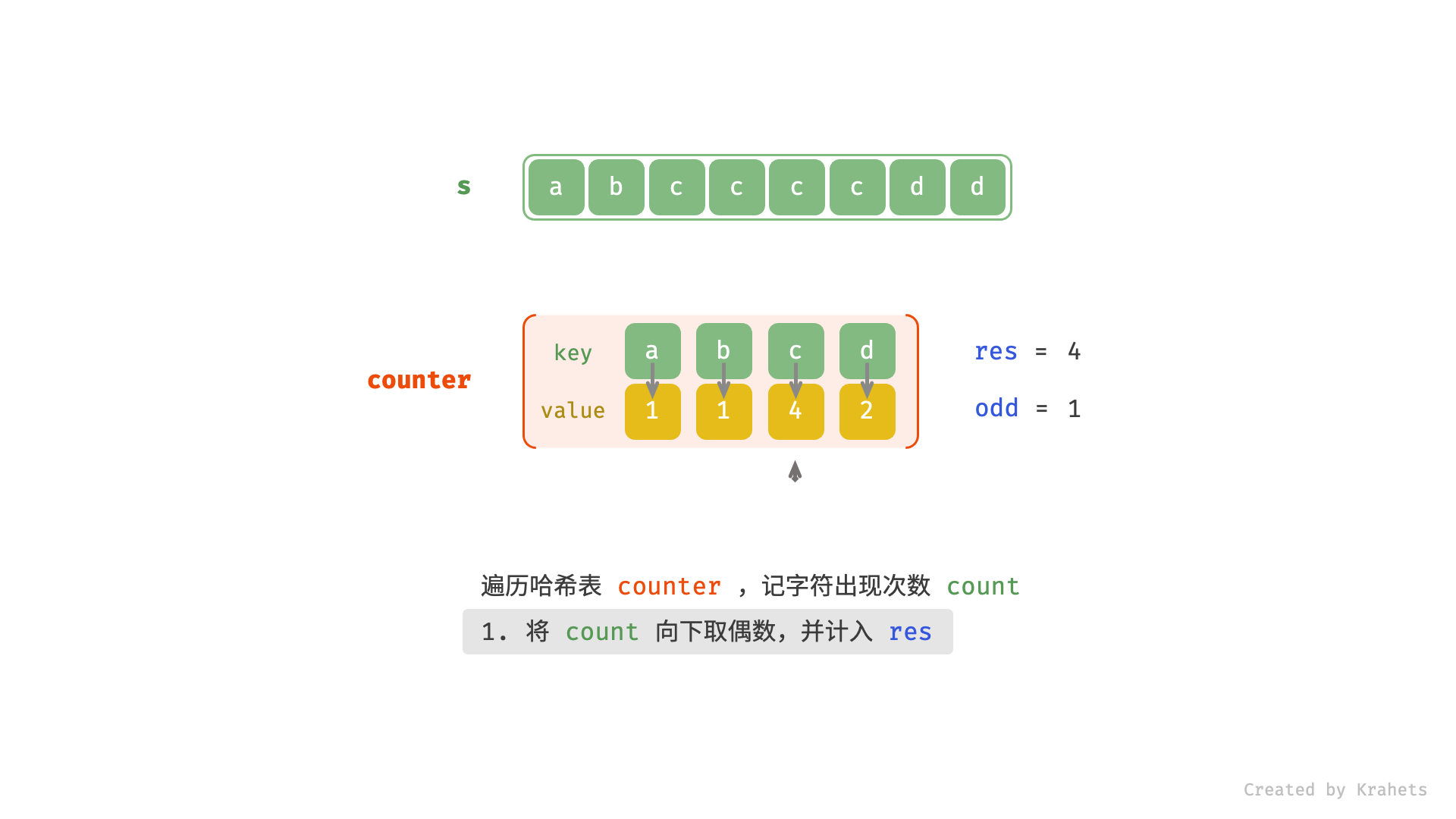 ,
,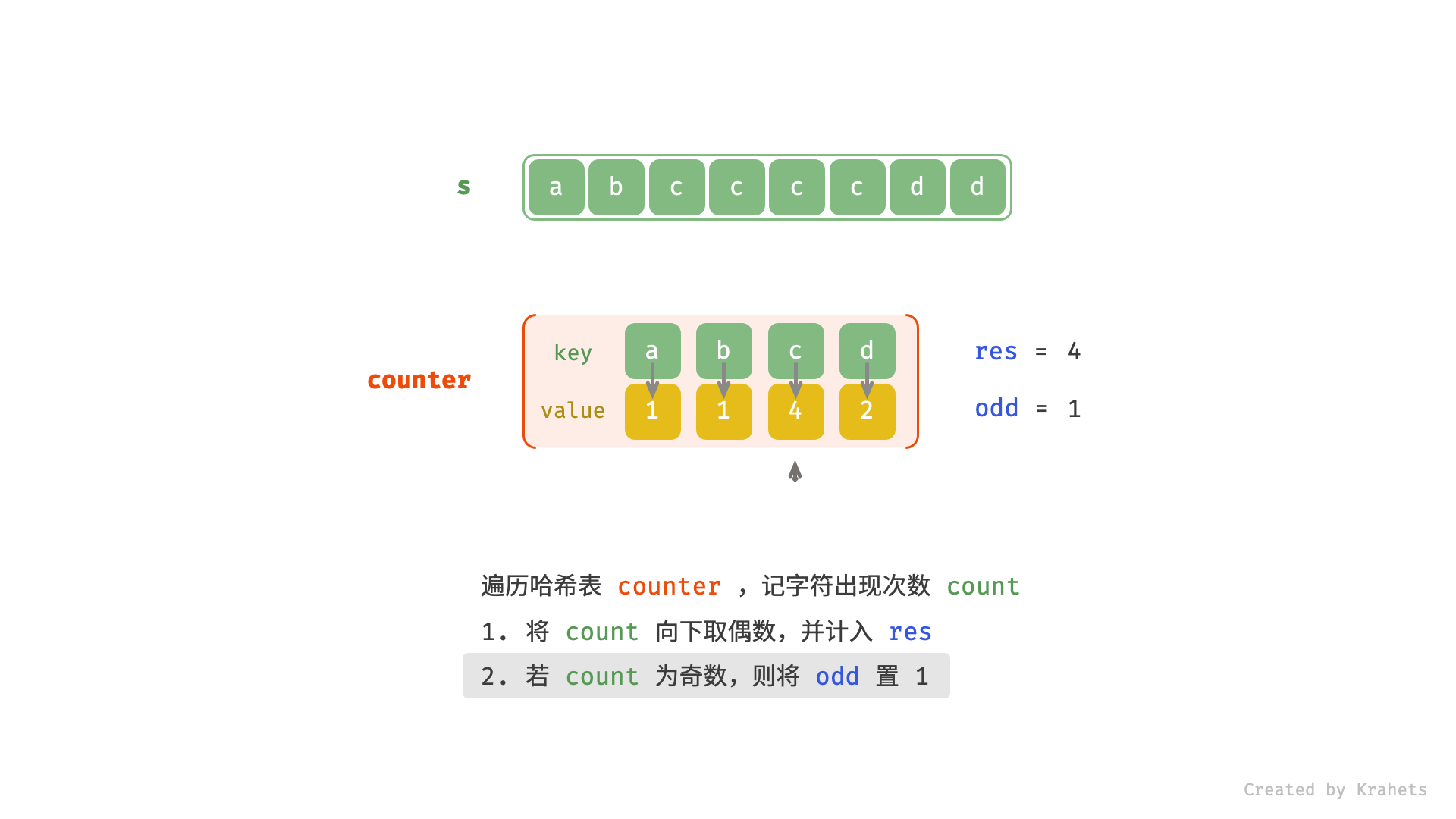 ,
,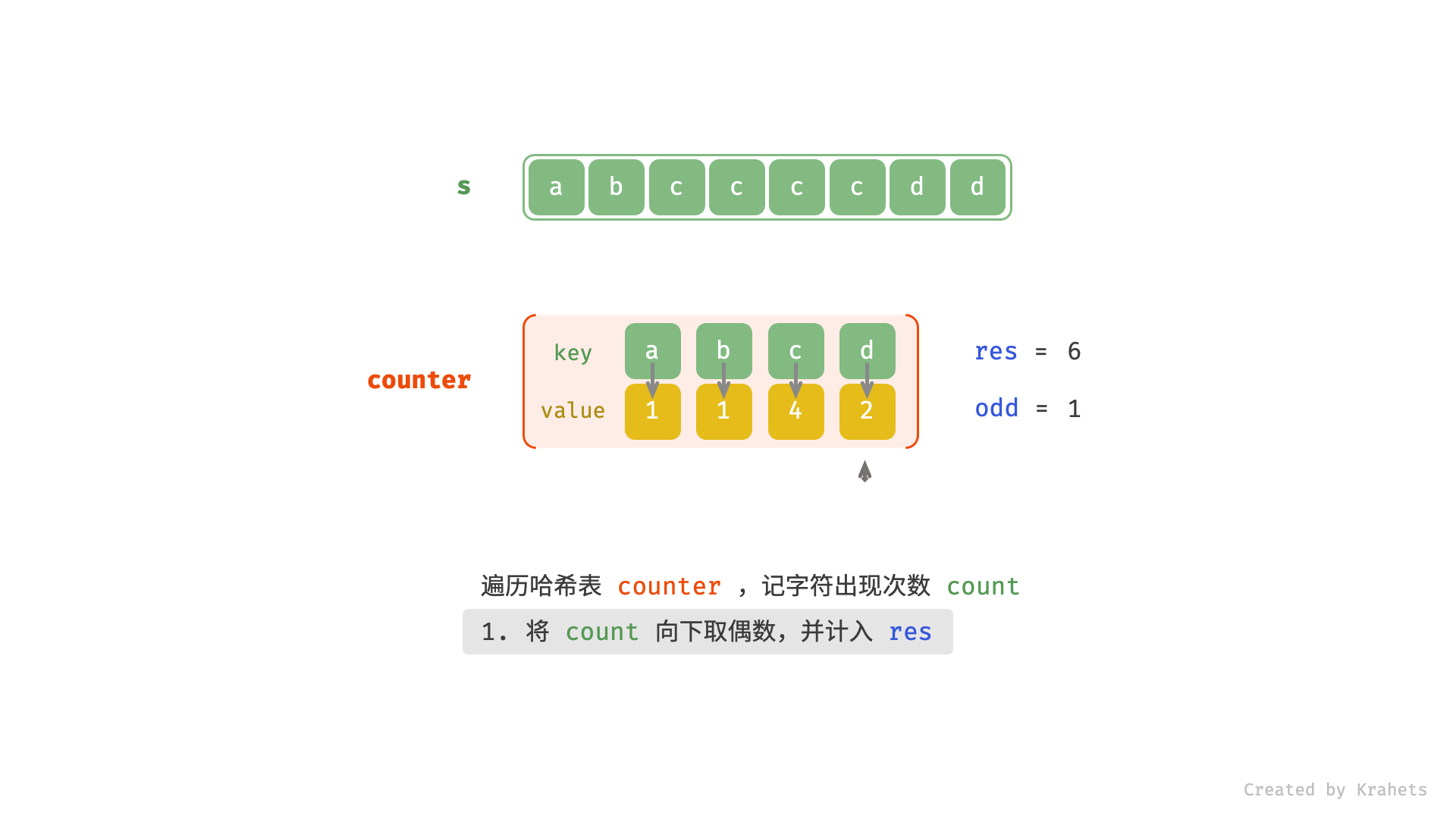 ,
,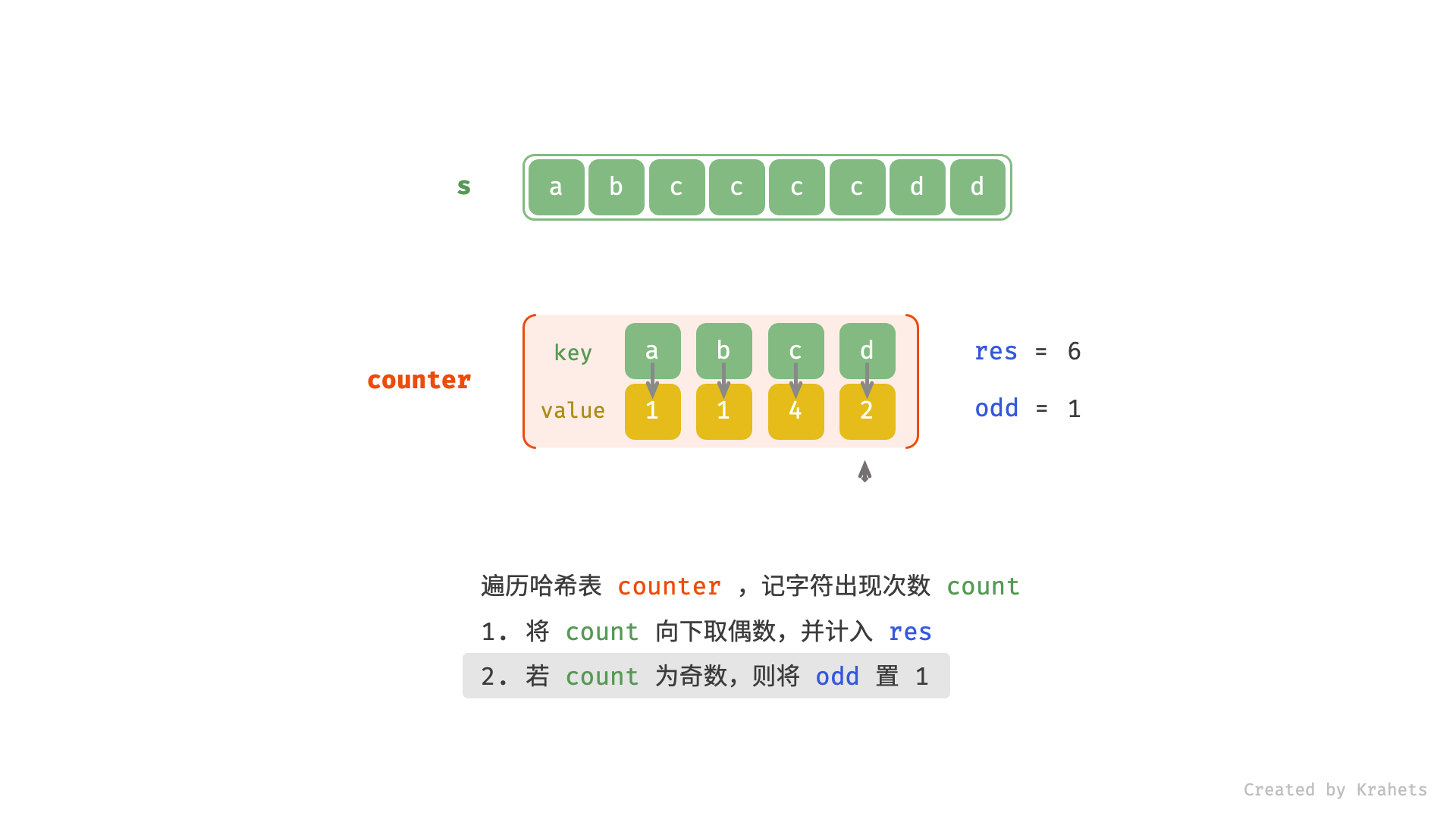 ,
,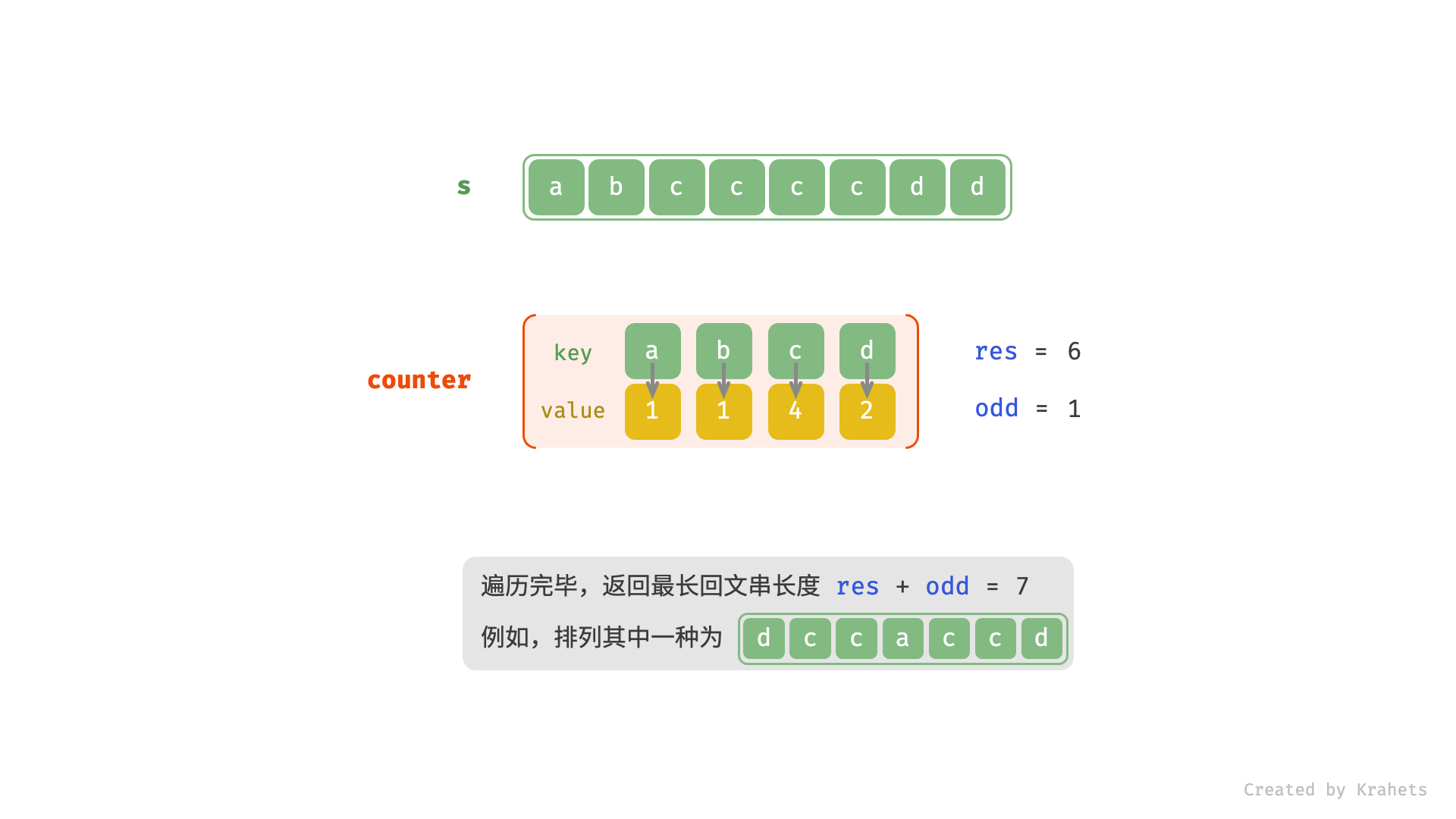 >
>
代码
Python
class Solution:
def longestPalindrome(self, s: str) -> int:
# 统计各字符数量
counter = collections.defaultdict(int)
for c in s:
counter[c] += 1
res, odd = 0, 0
# 统计构造回文串的最大长度
for count in counter.values():
# 将当前字符出现次数向下取偶数,并计入 res
rem = count % 2
res += count - rem
# 若当前字符出现次数为奇数,则将 odd 置 1
if rem == 1: odd = 1
return res + oddJava
class Solution {
public int longestPalindrome(String s) {
// 统计各字符数量
HashMap<Character, Integer> counter = new HashMap<>();
for (int i = 0; i < s.length(); i++)
counter.merge(s.charAt(i), 1, (a, b) -> a + b);
// 统计构造回文串的最大长度
int res = 0, odd = 0;
for (Map.Entry<Character, Integer> kv : counter.entrySet()) {
// 将当前字符出现次数向下取偶数,并计入 res
int count = kv.getValue();
int rem = count % 2;
res += count - rem;
// 若当前字符出现次数为奇数,则将 odd 置 1
if (rem == 1) odd = 1;
}
return res + odd;
}
}C++
class Solution {
public:
int longestPalindrome(string s) {
// 统计各字符数量
unordered_map<char, int> counter;
for (char c : s)
counter[c]++;
// 统计构造回文串的最大长度
int res = 0, odd = 0;
for (auto kv : counter) {
// 将当前字符出现次数向下取偶数,并计入 res
int count = kv.second;
int rem = count % 2;
res += count - rem;
// 若当前字符出现次数为奇数,则将 odd 置 1
if (rem == 1) odd = 1;
}
return res + odd;
}
};复杂度分析
- 时间复杂度 $O(N)$ : 其中 $N$ 为字符串
s长度。遍历字符串s和哈希表counter皆使用线性时间。 - 空间复杂度 $O(1)$ : 由于 ASCII 字符数量为 128 ,哈希表
counter最多使用 $O(128) = O(1)$ 空间。